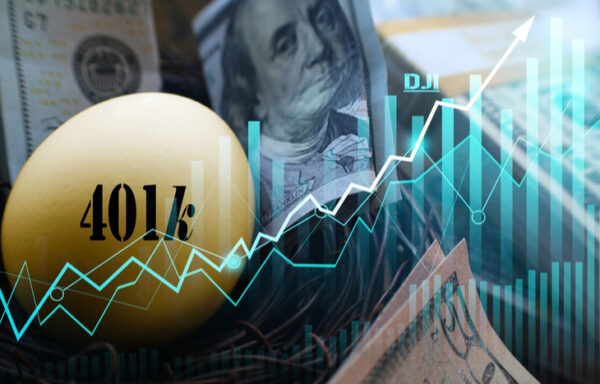Is This What a Top Looks Like?
The stock market started 2020 like it ended 2019 – in rally mode. The gains took major averages to a series of new all-time highs.
The S&P 500 rose above 3,300, the Dow Jones Industrial Average surpassed 29,000 and the Nasdaq flew by 9,400.
Investors kept riding the winners of 2019. Tech stocks like Apple (Nasdaq: AAPL), Advanced Micro Devices Inc. (Nasdaq: AMD), Lam Research (Nasdaq: LRCX) and Nvidia (Nasdaq: NVDA) surged to start 2020. They have become “must-owns” for hedge funds and day traders.
Meanwhile, Tesla (Nasdaq: TSLA) continues to defy the skeptics while Virgin Galactic Holdings Inc. (NYSE: SPCE) has more than doubled since early December. (The apparent reason for this move is that Virgin Galactic is one of a few “pure play” bets on the growing space industry.)
The “fear of missing out” (FOMO) factor is very real, especially among professional money managers. This same feeling had them chasing stocks at the start of 2020.
“Everybody is missing out, so everybody wants to get in,” Bridgewater Associates founder Ray Dalio told CNBC. “Cash is trash.”
Dalio, whose firm manages $160 billion, is bullish on gold as a hedge but sees clear sailing until the 2020 presidential election at least.
Historically, incumbent presidents do everything possible to boost economic growth during an election year, and President Trump will very likely do the same. That is the conventional thinking on Wall Street.
Optimism was the prevailing view of global business and political leaders at the World Economic Forum in Davos, Switzerland. Bridgewater’s co-chief investment officer Bob Prince told Bloomberg, “We’ve probably seen the end of the boom-bust cycle.”
CEOs are also feeling better after the U.S. and China signed a Phase One trade deal.
“The global economy is healthy,” Tyson Foods CEO Noel White told The Wall Street Journal. “From a trade perspective, we feel very good about the agreements that have come together.”
Meanwhile, the latest cover story from Barron’s declared, “The Dow Jones Industrial Average is going to hit 30,000 – and don’t expect it to stop there.”
These comments reflect a level of confidence that often occurs at market peaks. Most famously, Yale economist Irving Fisher declared, “Stock prices have reached what looks like a permanently high plateau” right before the crash of 1929.
I don’t believe sentiment is anywhere near as bullish as it was in 1929 – or early 2000, for that matter. As I’ve written before, investors wouldn’t be pouring record amounts of money into bond funds and taking them out of equity funds if everyone were bullish on stocks.
Still, this is not the kind of commentary and market action you see at a market bottom.
After a big rally in 2019 (and to start 2020), it would not be surprising to see the market pull back 5% to 10%.
The trigger could be weaker-than-expected fourth quarter earnings or fears that the coronavirus outbreak will slow China’s economy, which has already been hit by the trade war.
(Chinese stocks tumbled Thursday ahead of the country’s Lunar New Year, which starts Saturday. Millions of Chinese citizens typically travel during the weeklong holiday, raising concerns about the virus spreading.)
Whatever the cause, a 5% to 10% correction would be healthy and normal. In fact, it would be more surprising and less healthy in the long run if the market doesn’t take a pause soon.
How to Beat a Correction: Go Back to the Basics
The real question, then, is whether any near-term setback is temporary or the beginning of the end of the bull market.
I don’t believe that’s the case, and I certainly wouldn’t bet on it.
A more likely scenario is for the rally to resume after a temporary pullback. That’s because the bullish backdrop remains intact. We still have…
- An improving global economy
- Stock valuations that, while high by historic levels, are attractive relative to bonds
- A Fed that is unlikely to raise rates anytime soon
- A lack of euphoria about the rally, especially on Main Street. (Today’s environment has more similarities to the 1994 to 1996 era stock market than to the market peak of 1999 to 2000.)
Stepping back to review your stock holdings is important, especially after a big rally. If you own any of the big winners mentioned above (or others with similar performance), start by asking yourself these questions:
- Are the fundamentals (earnings, etc.) improving along with the stock price?
- Are the reasons I bought the stock – and the “story” I told myself – still intact?
If you answered “Yes” to those questions, I recommend setting stops on your big winners (or raising them if you already have them in place).
A stop loss is valuable because it will trigger a sale when the stock falls to a certain level. You can set a stop loss order at any level you wish, either at a specific price or at a percentage below current levels. (Here at Wealthy Retirement, for example, we recommend setting trailing stops at 25%.)
And if you’re sitting on big paper gains, a stop loss will prevent you from giving it all back if the market suffers a big decline.
But if you answered “No” to either of those questions – if a company’s fundamentals don’t match its price or if its story is falling flat – think about selling all or part of your holdings. Either way, there’s no sin in booking profits, and selling after a heady run is always better than selling when stocks are in retreat.
And if you’ve been sitting on cash that’s earmarked for investing, get your buy list ready. Make sure you’re prepared to spring into action if – and when – the pullback comes.
About Aaron Task
Aaron is an expert writer and researcher who formerly served as editor-in-chief at Yahoo Finance, digital editor of Fortune, and executive editor and San Francisco bureau chief of TheStreet. You may have also seen him as a guest on CNBC, CBS This Morning, Fox Business, ABC News and other outlets.
A prolific writer and commentator, Aaron is the former host of Yahoo Finance’s video program The Daily Ticker. He has also hosted podcasts for Fortune (Fortune Unfiltered) and TheStreet (The Real Story). His latest on-air passion project, Seeking Alpha’s highly rated Alpha Trader podcast, features top Wall Street experts dissecting the market’s latest news and previewing significant upcoming events. He also regularly provides analysis for the free e-letter Wealthy Retirement, which we will be republishing here on Investment U.






